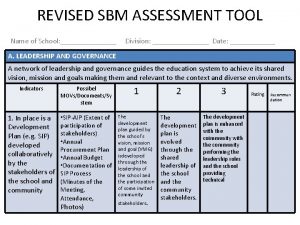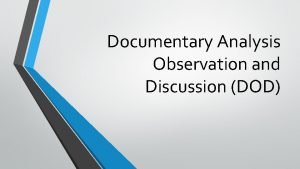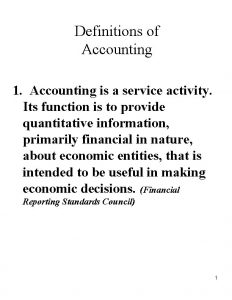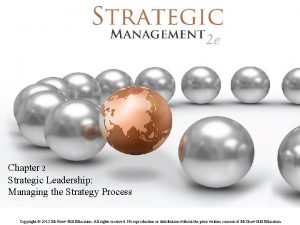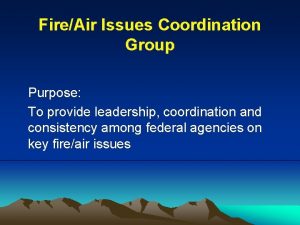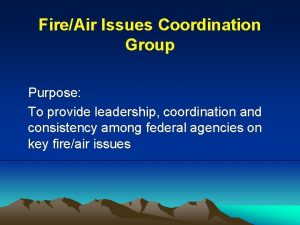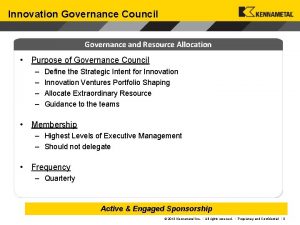Governance Structures Purpose of Governance To provide leadership




















- Slides: 20

Governance Structures

Purpose of Governance • To provide leadership for the organisation or business • To ensure continuous improvement of the organisation or business • By adding value to the organisation or business • To ensure the business is knowledgeable, critical, strategic, and courageous • To ensure the long-term sustainability of the organisation or business

Key Roles of Governance • To maintain and grow trust and confidence in the business and its role in society. • To maximise value and performance of the organisation or business.

Principles of Good Governance • Principles of • • Responsibility Accountability Fairness Transparency (RAFT) This is universal and applies to all organisations.

Advantages of Good Governance. To ensure; • Growth, • Risk management, • Ethics, • Board meetings, • Advisory boards, • Succession planning, and • Exit strategies.

Types of Governance 1. Corporate • e. g. boards of companies • e. g. boards of 2. Non-corporate • • a public company; a private, limited or closely held company; a family business; or a non-profit, not for profit, or tax-exempt entity.

Corporate Governance • Exists to help organisations achieve their fundamental purpose. For companies, this is to maximise shareholder value, for other organisations it might be to pursue policy, non-profit, public good, or commercial objectives. • Defined as “the framework of rules, relationships, systems, and processes within and by which authority is exercised and controlled within corporations” • Provides the structure through which the objectives of the company are set, and the means of attaining those objectives and monitoring performance are determined.

Advantages of Good Corporate Governance. • Provide organisational leadership • Ensure accountability and transparency • Lowering cost of capital and increasing value of the company • Producing better operational performance through better allocation of resources and better management • Reducing the risk of financial crisis that can affect economic and social costs • Ensuring stakeholder relationships are managed.

Non-Corporate Governance • Non-profit or Not for Profit (NFP) boards e. g. Incorporated Societies, Charitable Trusts, Charities • Established to benefit the community or members but nor profit or gain can be given to the members. • Experience high levels of stakeholder scrutiny including the public & the government

Maori Governance • Types of Maori entities • Iwi or hapu including post settlement governance entities (PSGEs), Maori Trust Boards and incorporated societies • • Maori Land Court trusts, Maori Incorporations, Maori reservations National, pan-tribal and urban authorities Charitable trusts Commercial operations • Provides values in whakapapa (genealogy), linking Maori to the land, tikanga (customs), manakitanga (hospitality) & kaitiakitanga (guardianship) • Ensures procedural aspects like kawa (protocols), use of te reo, karakia (prayers), koha (donations), & tangihanga (bereavement leave)

How does Governance differ from Management? • Governance • • • Defines leadership role, sets plans, policies and high ethical standards Longer term focus and a helicopter view Monitors and holds management to account • Management • • • Executes board approved strategy Works to the business plan Has a day to day operational focus

Board of Directors • Can also be called board of governors, board of managers, board of regents, board of trustees, or board of visitors. It may also be called "the executive board" and is often simply referred to as "the board". • Usually a board of directors manages a company on behalf of the owners – the shareholders. • Directors are agents of the company’s owners, charged with fulfilling the company’s purpose.

Board Competencies These competencies are required from the Board as a collective group of people • Strategic and performance leadership • Business acumen • Informed decision making • Communication

Types of Directors on Boards • Executive – a company executive who is also a director of the same company e. g. CEO or CFO. Provide a greater depth of company knowledge. • Non-executive – not employed by the same company. Provide independent judgement and outside experience and objectivity to all issues, but has an understanding of the industry. E. g. a soil scientist on Ballance Agri. Nutrients Board. • Independent – they are independent of management and of usually of that type of business. E. g. a person who does not have children at a school, does not work at a school and does not work in the education industry but is on a school’s Board of Trustees. They bring fresh thinking and new perspectives to the business.

What is an Advisory Board? • Advisory boards provide advice and / or guidance to boards of directors or senior managers • They do not make decisions and have no authority to govern • They are usually made up of skilled and experienced individuals that augments the board and management

Four Pillars of Governance The Board of Directors adds value by: 1. Determining purpose • Purpose, goals and objectives, strategy, sustainable. 2. An effective governance culture • Sets the culture, tone, and ethics 3. Holding to account • Holds management to account using purpose & strategy, & oversees & monitors risk 4. Effective compliance • Has a high standard of compliance and ensures the business is solvent

Pillar One: Determining purpose • Defines the business’ purpose, includes mission, vision, values, and principles. • Sets goals and objectives and planning actions that will achieve them. • Ownership of strategic direction – understands the business environment and is able to add enhanced value to management operations. • To remain competitive and sustainable in the long term, purpose beyond profit is important. • Watch an example of Pillar 1 from Maniapoto Maori Trust Board http: //bit. ly/2 Bd. Hi 2 m or ACC http: //bit. ly/2 E 5 AL 8 k

Pillar Two: An effective governance culture • Adds value by acting as a team with a high performance culture committed to engaged, quality governance of the entity • • Sets the tone from the top • Developed and fostered through a combination of good relationships, architecture and processes • Watch an example of Pillar 2 from http: //bit. ly/2 EHURGT or http: //bit. ly/2 n. NNPYX Ensures consistent integrity and sound ethical behaviour. Supports open debate, diversity, thoughtful challenge and constructive dissent Characterised by effective relationships between directors and with management, shareholders and stakeholders

Pillar Three: Holding to account • Holds management accountable through informed, astute, effective and independent oversight • Ensures purpose and strategy are understood by management and implemented • Oversees and monitors risk management • Watch and read about an example of Pillar 3 from http: //bit. ly/2 C 1 t. GE 8

Pillar Four: Effective compliance • Ensures the business is solvent • Provides financial reports, company records and information, and processes such as annual meetings • Has a high standard of compliance with regulatory environments • Complying with their duties and responsibilities and the letter of the law • Watch and read about an example of Pillar 4 from https: //accntu. re/2 GSBk. Ek
 Function of homologous structure
Function of homologous structure Matthew goniwe school of leadership and governance
Matthew goniwe school of leadership and governance Sbm movs
Sbm movs Governance leadership and management
Governance leadership and management School based management principle 3
School based management principle 3 Importance of corporate governance
Importance of corporate governance Transactional vs transformational leadership
Transactional vs transformational leadership Situational leadership vs adaptive leadership
Situational leadership vs adaptive leadership Enthusiastic beginner disillusioned learner
Enthusiastic beginner disillusioned learner What is a sentence purpose
What is a sentence purpose Chapter 5 selecting a topic and a purpose
Chapter 5 selecting a topic and a purpose The united states ought to provide a universal basic income
The united states ought to provide a universal basic income How to pack and unpack guest luggage
How to pack and unpack guest luggage Room service door knob menu card
Room service door knob menu card Receive housekeeping request
Receive housekeeping request What are the characteristics of people as media
What are the characteristics of people as media Retained earnings for sole proprietorship
Retained earnings for sole proprietorship Accounting records that provide the audit trail for payroll
Accounting records that provide the audit trail for payroll Product-oriented vision statements provide managers with
Product-oriented vision statements provide managers with Fcaw welding process
Fcaw welding process Analyze the cartoon below then provide
Analyze the cartoon below then provide


